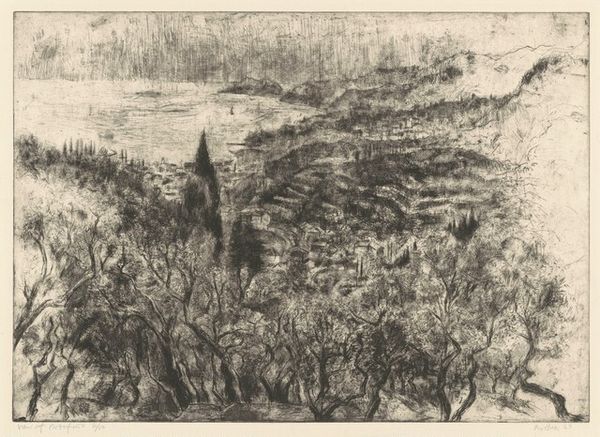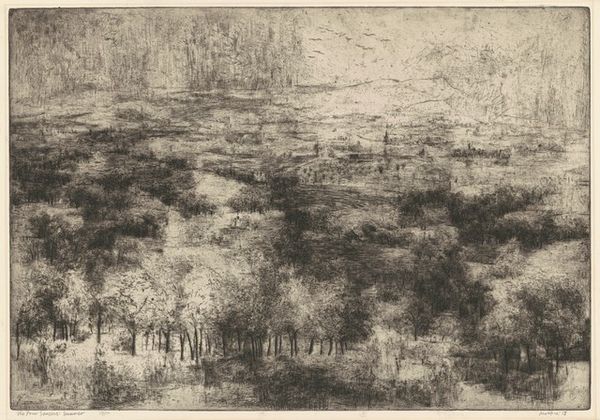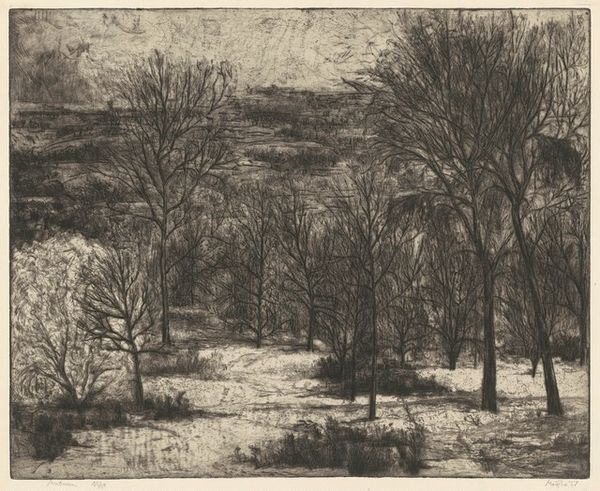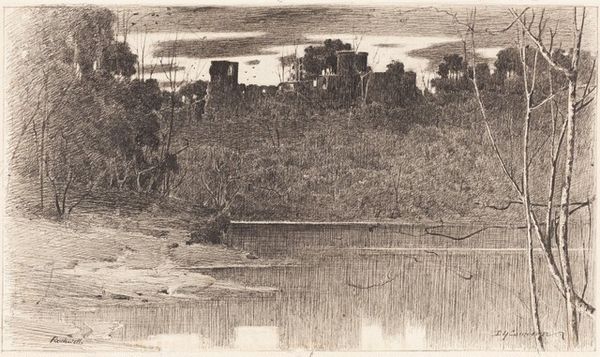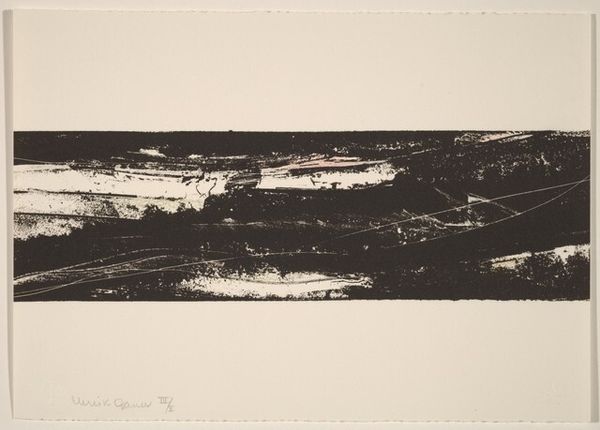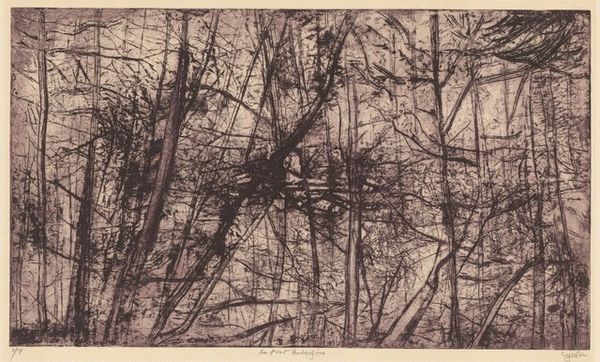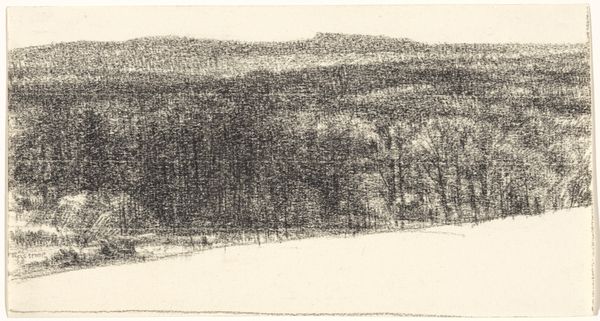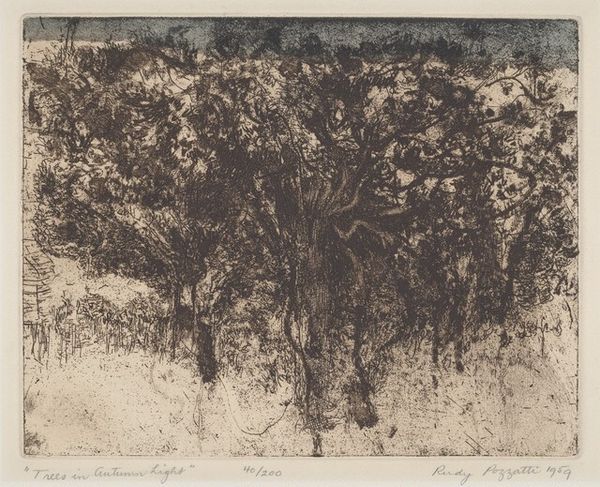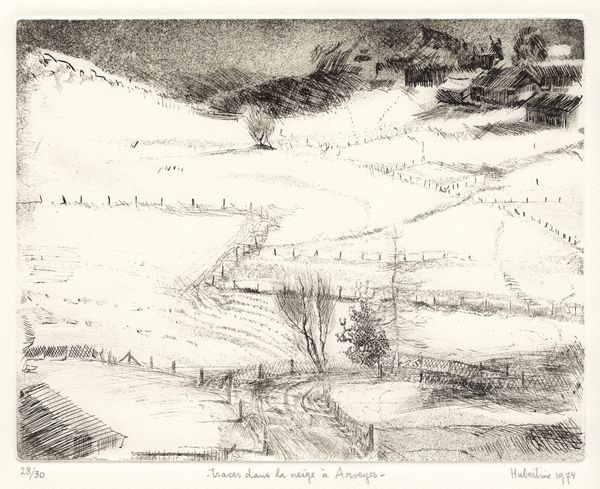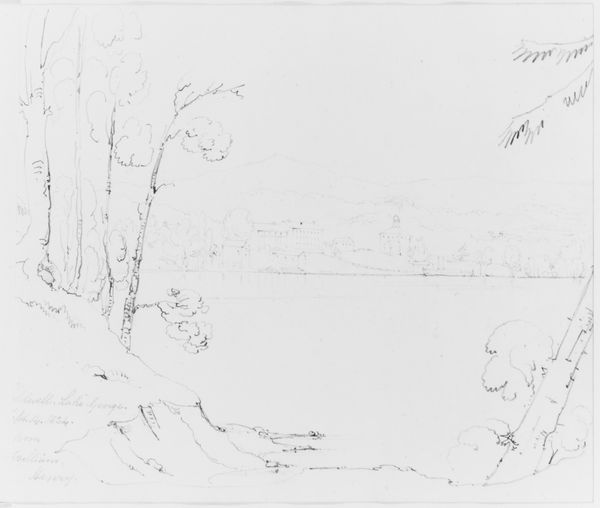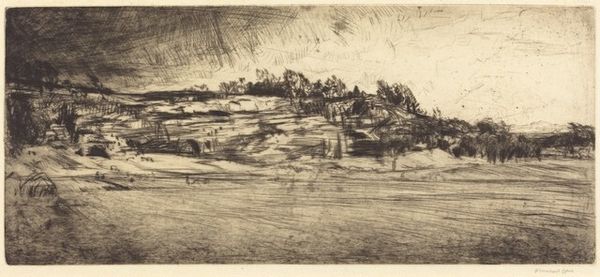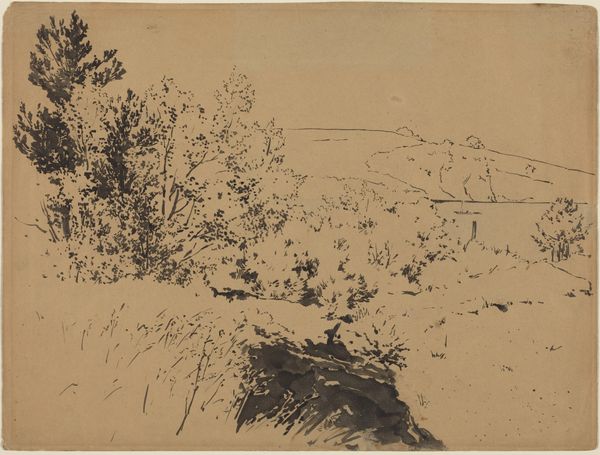
print, etching
# print
#
etching
#
landscape
#
winter
#
etching
#
realism
Dimensions: plate: 60.6 x 87.2 cm (23 7/8 x 34 5/16 in.) sheet (irregular): 64.1 x 96.2 cm (25 1/4 x 37 7/8 in.)
Copyright: National Gallery of Art: CC0 1.0
Curator: Moishe Smith, the artist behind "Winter", crafted this etching back in 1958. It captures, as the title suggests, a serene, snow-laden landscape. Editor: Serene, yes, but initially striking for its sparseness. The etching technique emphasizes bareness and the raw bones of the winter season. Curator: Absolutely. Smith uses etching to tap into deep-seated cultural associations we have with winter. It mirrors those older mythic ideas of death and rebirth and how civilizations adapted their practices through these months of harsh conditions and change. Editor: It’s intriguing to consider the etchant itself as an agent in depicting this harshness. The way he's manipulated the copperplate; its physical inscription, how the lines have been bitten, reflects both the beauty and difficulty of a season. It speaks of labor in a cold climate too. Curator: Look closer. Notice the recurring patterns of lines. Doesn't that evoke the relentless cycle and persistence that defines our experience, mirroring what we tell about life's resilience amid difficulties through visual symbolism? Editor: True, it certainly moves away from a romantic idea of the pastoral, the etching instead becomes the very tool of observing labor in harsh condition of material and extraction Curator: This image holds generational impressions about winter – how communities persevered and reshaped these natural events through generations. Smith is communicating resilience visually using symbolic imagery. Editor: Ultimately, though, it comes back to how his work prompts reflections about our contemporary conditions around materiality as the ground to stand on; maybe we need art like Smith’s so that it forces reflection about value today and beyond nostalgia for prior cultural knowledge or practice. Curator: You're right. I find Smith’s piece reminds me that symbols only matter if you find and keep applying them within society across different perspectives. Editor: Yes, it’s the process of continual questioning and re-interpreting which make any artifact worthy beyond the means of their making.
Comments
No comments
Be the first to comment and join the conversation on the ultimate creative platform.
